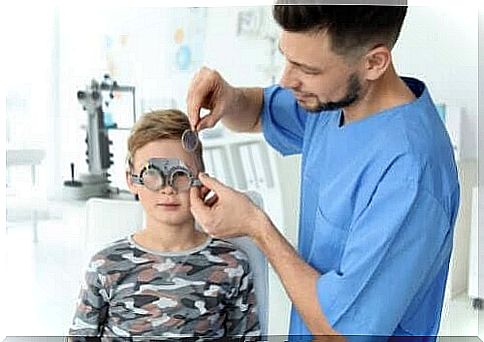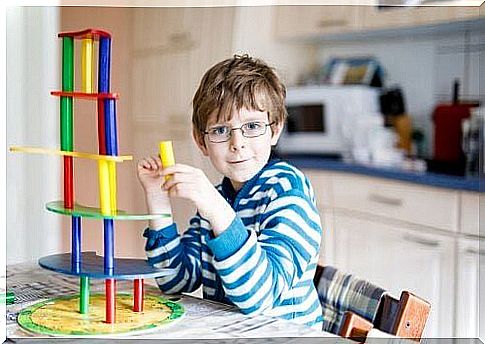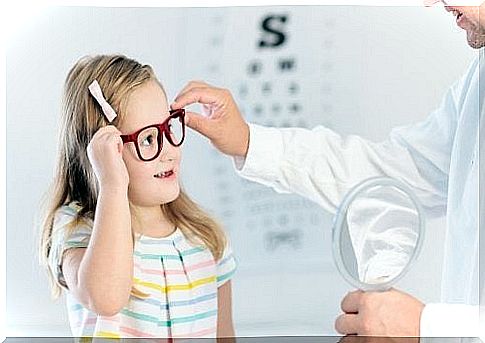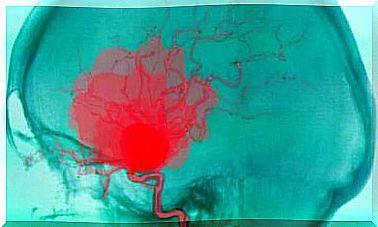Vision Problems In Young Children

Some common vision problems in children, such as strabismus or nearsightedness, are relatively easy for parents to detect. However, there are other asymptomatic diseases that can go unnoticed.
It is important to pay attention to a number of symptoms and signs that may appear in the presence of any eye disease or disorder in your child.
Warning Signs of Vision Problems in Children

When the child shows warning signs such as not seeing straight from a distance, and bringing objects too close to the face. It can also be frequent rubbing the eyes repeatedly and averting one eye, especially in a tired state. In other cases, your child may tilt her head back for a better look and complain of a headache or blurry vision.
Child’s visual behavior during the first months of life
During the first year of life, the normal evolution of vision is as follows:
- 6 weeks. Reacts to facial expressions.
- 2-3 months. It senses movement and is able to follow a shiny object with its eyes.
- 3-6 months. It looks at the hand and is able to follow the activities of its environment.
- Four months. He smiled at his own image reflected in the mirror.
- 6 months. It chases small objects with its eyes and reaches for them.
- 7 months. Touch your image in the mirror.
- 9 months. Get up to see an object.
- 1 year. Search for toys and objects that disappear from your gaze.
To prevent them from becoming chronic and irreversible visual impairments, it is important to carry out a complete eye review from 4 years of age onwards. Especially if there is a history of an eye disorder in the family.
Vision problems
The most common vision problems in children are refractive defects such as nearsightedness, farsightedness and astigmatism. In addition, amblyopia (lazy eye), strabismus and dyschromatopsia (alterations in color vision) are common.
lazy eye
Amblyopia, or lazy eye, affects about 2-5% of the population and is one of the most common causes of vision loss in developed countries. In the case of the lazy eye, early diagnosis and treatment is essential when it comes to avoiding the continuation of the disease into adulthood.
Special attention must be paid if the child is premature, has a history of lazy eyes in the family, as well as refraction or retinal problems.
Although it is usually asymptomatic, some signs may be headache or neck pain. Furthermore, when the child already knows how to read, he tends to skip words or confuse letters.
Strabismus
Strabismus affects between 3 to 6% of the population. It is necessary to diagnose it in time, as it can be corrected in children with treatment, whereas in adults it cannot. Some of the signs of strabismus can be, for example:
- Incorrect eye alignment.
- The eyes don’t move in the same direction.
- Tilt your head to one side to look at concrete spots.
- Blinks eyes or rubs them habitually.
- The child squints or closes one eye to focus.
refraction problems

In summary, refractive defects such as astigmatism, nearsightedness and farsightedness affect about 20% of children.
Myopia
Myopia appears at around 6 years of age and usually presents symptoms such as straining the eyes to focus on objects from afar, as well as confusing people who are at different distances. In addition, some children can also bring objects closer to see them, as well as squinting to focus better.
hyperopia
It is usually physiological, which is why it is present in most children at birth. However, it disappears as the eye grows.
In some cases, however, it can persist for a lifetime. This is uncorrected high hyperopia and can lead to amblyopia or strabismus. In addition, you may experience signs such as headache when trying to focus closely and eye strain right after performing this type of exercise.
Astigmatism
When there is astigmatism, light from objects entering the eye focuses on more than one point on the retina. The main symptom is blurred or distorted perception of both distant and nearby objects.
Finally, did you know the signs of a visual problem in children? If you have noticed any of these symptoms in your child, be sure to consult your trusted specialist. The professional will determine the type of problem as well as its treatment.









